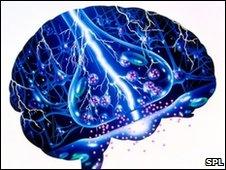Birth defect link to valproic acid epilepsy drugs
- Published

Epilepsy is a common neurological disorder
A drug used to treat epilepsy could cause more wide-ranging birth defects than first thought, research at the University of Ulster has shown.
The study revealed that the use of valproic acid in the first trimester could potentially cause problems.
Seven types of birth defect were identified ranging from spina bifida, cleft palate, heart defects and limb reduction.
The results were published in the New England Journal of Medicine.
Professor Helen Dolk from the University of Ulster's Nursing Research Institute and a lead researcher on the Europe wide project, said:
"The first trimester is the period when the major organs are developing and the research has shown that the use of valproic acid was associated with significantly increased risks of the development of several malformations present at birth."
The researchers from Ulster, in collaboration with University of Groningen in the Netherlands and the EUROCAT network, examined data gathered from a population of nearly four million births, including 98,075 live births, stillbirths, or terminations with malformations, in 14 European countries between 1995 and 2005.
'Major birth defects'
Professor Dolk said the National Institute for Health and Clinical Excellence has previously advised caution to women of child-bearing age on taking the anti-epileptic drug.
"The results from our research reinforces this, about 2% of births have major birth defects.
"However, with mothers who take valproic acid, the risk of birth defects can be as much as two to three times higher," she said.
"Our study has shown that risk varies according to the specific type of malformation and identified seven different types of malformation in which the risk was increased between two and 12 times compared with no anti-epileptic drug use."
The researchers also compared the use of valproic acid with the use of other anti-epileptic drugs and found the risk was mainly related to valproic acid rather than other anti-epileptic drugs.